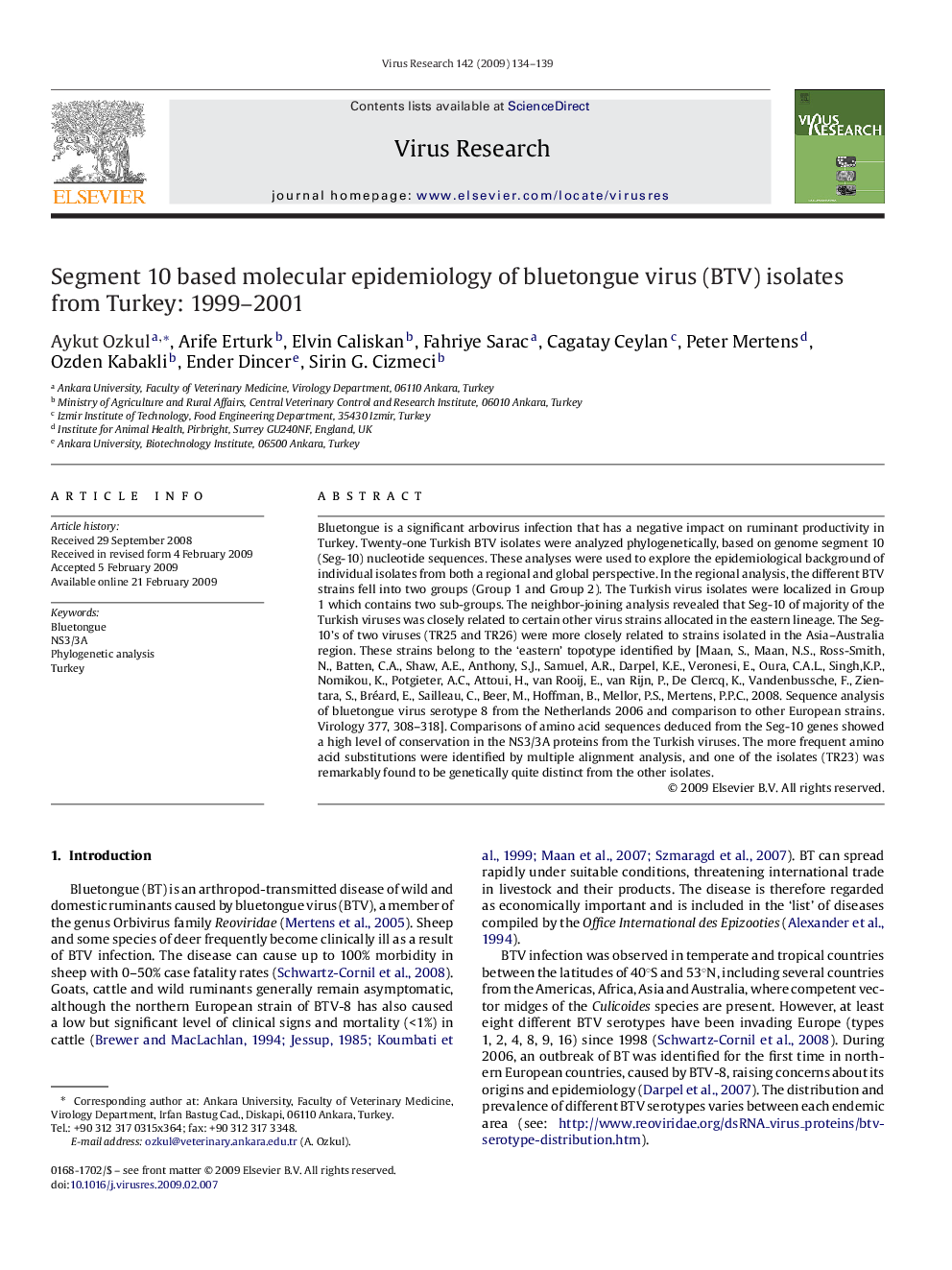| Article ID | Journal | Published Year | Pages | File Type |
|---|---|---|---|---|
| 3430071 | Virus Research | 2009 | 6 Pages |
Bluetongue is a significant arbovirus infection that has a negative impact on ruminant productivity in Turkey. Twenty-one Turkish BTV isolates were analyzed phylogenetically, based on genome segment 10 (Seg-10) nucleotide sequences. These analyses were used to explore the epidemiological background of individual isolates from both a regional and global perspective. In the regional analysis, the different BTV strains fell into two groups (Group 1 and Group 2). The Turkish virus isolates were localized in Group 1 which contains two sub-groups. The neighbor-joining analysis revealed that Seg-10 of majority of the Turkish viruses was closely related to certain other virus strains allocated in the eastern lineage. The Seg-10's of two viruses (TR25 and TR26) were more closely related to strains isolated in the Asia–Australia region. These strains belong to the ‘eastern’ topotype identified by [Maan, S., Maan, N.S., Ross-Smith, N., Batten, C.A., Shaw, A.E., Anthony, S.J., Samuel, A.R., Darpel, K.E., Veronesi, E., Oura, C.A.L., Singh,K.P., Nomikou, K., Potgieter, A.C., Attoui, H., van Rooij, E., van Rijn, P., De Clercq, K., Vandenbussche, F., Zientara, S., Bréard, E., Sailleau, C., Beer, M., Hoffman, B., Mellor, P.S., Mertens, P.P.C., 2008. Sequence analysis of bluetongue virus serotype 8 from the Netherlands 2006 and comparison to other European strains. Virology 377, 308–318]. Comparisons of amino acid sequences deduced from the Seg-10 genes showed a high level of conservation in the NS3/3A proteins from the Turkish viruses. The more frequent amino acid substitutions were identified by multiple alignment analysis, and one of the isolates (TR23) was remarkably found to be genetically quite distinct from the other isolates.
